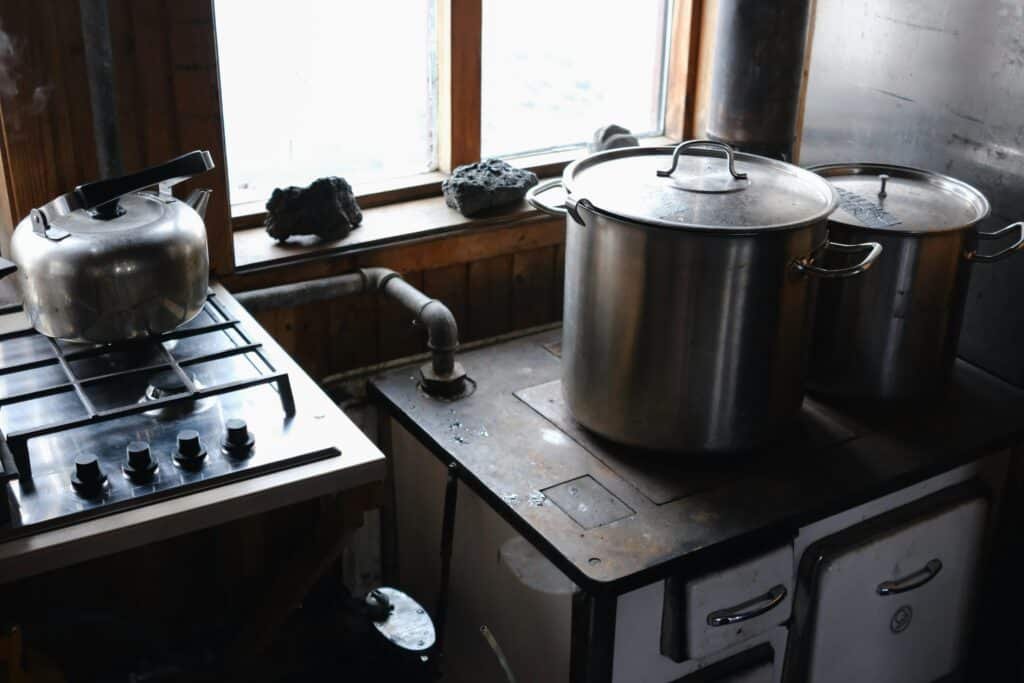Grease traps might not look impressive, but they play a vital role in every commercial kitchen. These plumbing devices sit between your sinks and the main sewer line, intercepting fats, oils, and grease, collectively known as FOG, before they enter the wastewater system.
When left unchecked, FOG can wreak havoc on your plumbing, the environment, and your wallet. Over time, the buildup can cause blockages, foul odors, and even health code violations. Regular cleaning isn’t just about compliance — it’s about protecting your business, your customers, and your equipment. Think of your grease trap as the unsung hero of your kitchen’s daily operations.
Common Problems Caused by Neglected Grease Traps
Skipping or delaying maintenance can create a domino effect of unpleasant issues. Some show up quietly, while others hit you (and your nose) all at once. Here’s what can happen when grease traps are ignored:
- Nasty Odors: As grease breaks down, it releases strong, unpleasant smells that can permeate the kitchen and dining area — not great for customer experiences.
- Plumbing Backups: When a trap is full, grease finds its way into pipes, causing slow drains and, eventually, expensive clogs or backups.
- Pest Problems: The smell and organic waste attract unwanted guests like cockroaches and rodents.
- Compliance Issues: Many health and environmental departments require documented maintenance. Neglecting this can lead to fines or even temporary closures.
- Environmental Damage: Overflowing grease can enter storm drains and waterways, harming local ecosystems.
Ignoring your grease trap is like ignoring a ticking time bomb. Sooner or later, it’s going to cause a costly mess.
How Often Should Grease Traps Be Cleaned?
There’s no one-size-fits-all answer, but the general rule is every one to three months — depending on your kitchen’s size, output, and equipment. High-volume restaurants and busy commercial kitchens often need monthly cleanings, while smaller operations might manage with quarterly service.
Factors influencing cleaning frequency include:
- Kitchen Volume: More cooking means faster grease buildup.
- Trap Size: Smaller traps fill up more quickly and need attention more often.
- Local Regulations: Health departments often set specific cleaning intervals and recordkeeping requirements.
- The 25% Rule: If your trap is more than one-quarter full of FOG and solids, it’s time for a clean-out.
Consistent cleaning keeps your kitchen compliant, prevents emergencies, and ensures staff can work without interruption.
What Happens During Professional Grease Trap Cleaning
What happens when a professional service steps in? Here’s the step-by-step breakdown of a typical grease trap cleaning darwin process — equally relevant wherever your business operates:
- Inspection: The technician checks waste levels, trap condition, and identifies any visible damage.
- Pumping and Removal: All contents, including water, solids, and grease, are vacuumed out with specialized equipment.
- Deep Cleaning: The walls and baffles are scraped and cleaned to remove hardened buildup.
- Inspection of Components: Key parts like seals, lids, and fittings are examined for wear or corrosion.
- Proper Disposal: The waste is transported to an approved treatment facility, ensuring no environmental contamination.
- Recordkeeping: Documentation is provided for compliance purposes, protecting you during inspections.
A professional service doesn’t just clean your system — it ensures long-term functionality, hygiene, and peace of mind.
Choosing the Right Grease Trap Cleaning Service
Selecting a reliable service provider makes all the difference. Here’s what to consider before hiring a company for grease trap cleaning darwin or anywhere else:
- Experience and Licensing: Look for certified professionals who understand local compliance standards and industry best practices.
- Transparent Pricing: Reliable providers offer upfront quotes with no hidden fees.
- Responsible Waste Disposal: Ensure the company follows eco-friendly disposal methods to protect your local environment.
- Emergency Support: Choose a service that offers quick response times — grease trap issues rarely wait for business hours.
- Positive Reviews: Check testimonials from other restaurant owners or facility managers to gauge reliability and service quality.
Working with an experienced, ethical cleaning company helps prevent future issues and keeps your kitchen running smoothly.

Final Thoughts
Regular grease trap maintenance is one of the most overlooked yet critical aspects of running a successful kitchen. It protects your plumbing, preserves your reputation, and ensures your business complies with environmental and health standards. By scheduling routine cleanings and partnering with trustworthy professionals, you’ll save time, money, and stress — while keeping foul odors and backups firmly at bay.
Remember: a clean grease trap is the hidden key to a clean, efficient, and thriving kitchen.

